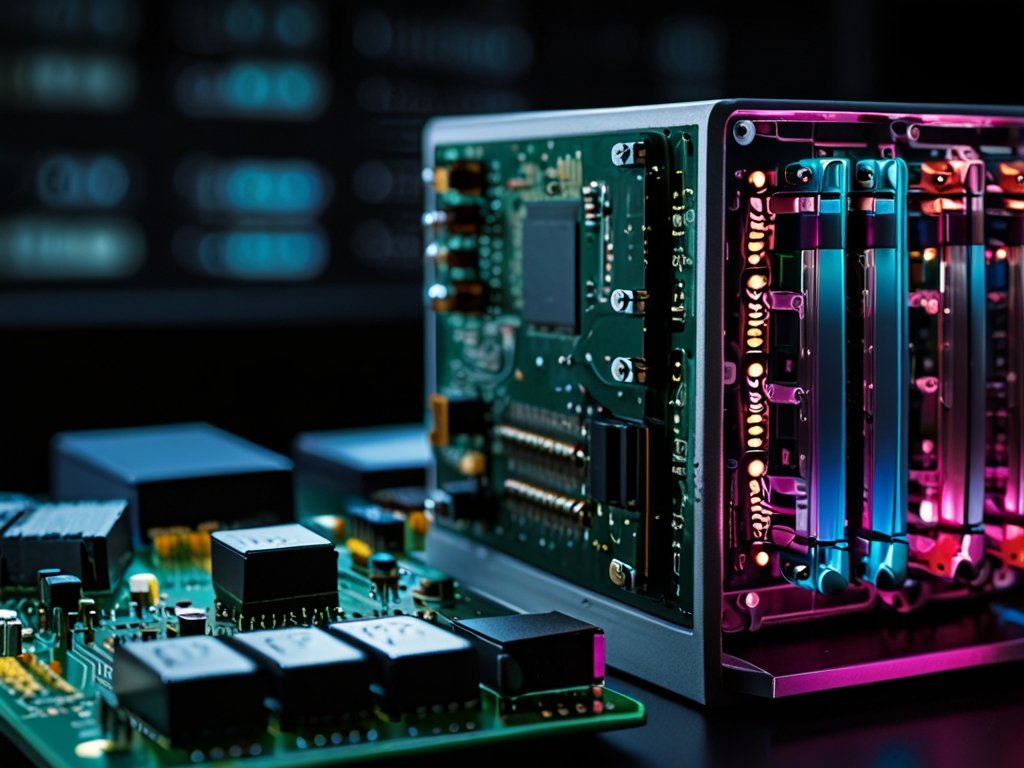A computer is an electronic device designed to process, store, and execute instructions to perform various tasks. It consists of essential components such as the CPU (Central Processing Unit), RAM (Random Access Memory), storage devices (HDD/SSD), input devices (keyboard, mouse), output devices (monitor, printer), and peripherals (USB drives). Being a programmable system, it follows predefined algorithms to efficiently generate outputs.
How Do Computers Work?
Computers operate through instructions provided in binary language, consisting solely of the values 0 (off) and 1 (on). To store and process these values, they use transistors, which exist in billions within memory chips, enabling data storage and manipulation. This structure allows the execution of complex tasks and ensures the functionality of modern computing systems.
History and Origin of Computers
The concept of computing dates back thousands of years, beginning with instruments such as the abacus. With technological advancements, mechanical calculators paved the way for modern computers. In the 19th century, Charles Babbage and Ada Lovelace created the Analytical Engine and the Difference Engine, laying the foundation for computing.
In the 20th century, major advancements occurred with the development of the ENIAC and UNIVAC, the first electronic computers. Later, the invention of transistors, integrated circuits, and microprocessors revolutionised the industry. In the 1990s, the rise of the Internet and personal computers transformed the world. Today, Artificial Intelligence, quantum computing, and cloud technology shape the future of computing.
Main Types of Computers
Depending on the user’s needs, there are various types of computers:
- Desktop Computers: Used for daily tasks, with separate components such as a monitor, keyboard, mouse, and CPU. These systems have powerful processors and are ideal for a wide range of functions.
- Laptops (Notebooks): A portable version of desktops, with all components integrated, offering mobility. They usually include built-in webcams, Bluetooth, and Wi-Fi.
- Servers: Designed to manage network resources such as databases and application hosting. They feature multiple processors and high-capacity storage.
- Tablets: More compact than laptops but larger than smartphones, featuring touchscreens and ideal for browsing, content consumption, and communication.
- Other Computing Devices: Including smartphones, gaming consoles, and Smart TVs, which serve specific roles in the digital world.
What is a CPU and How Does It Work?
The Central Processing Unit (CPU) is considered the “brain” of the computer. It executes instructions, performs calculations, and manages tasks to ensure the system operates efficiently. The CPU interacts directly with other essential components:
- RAM: Temporarily stores data required for running programs.
- Storage Devices: HDDs and SSDs permanently store data, including operating systems and files.
- Input Devices: Keyboards, mice, and other accessories enable user interaction with the system.
- Output Devices: Monitors, printers, and speakers display the results of processing.
Software and Hardware: The Essential Duo
- Software: A set of instructions that tell the computer what to do. Examples include operating systems, editing applications, and games.
- Hardware: The physical part of the computer, including the CPU, memory, and input/output devices.
The interaction between software and hardware occurs when user-entered commands are translated by the software into machine language, allowing the CPU to process them and generate responses.
Main Advantages and Disadvantages of Computers
Advantages:
- Increased efficiency and productivity
- Storage and organisation of information
- Facilitation of communication
- Quick access to data and content
- Automation of repetitive tasks
Disadvantages:
- Excessive dependence on technology
- Cybersecurity risks
- Possibility of social isolation
- Environmental impact due to electronic waste
- Job displacement due to automation
Conclusion
Computers have revolutionised the way we live and work, becoming indispensable for various activities. From productivity to entertainment, they play a fundamental role in modern society. With emerging technologies such as Artificial Intelligence, quantum computing, and cloud services, the future of computing promises to be even more.

